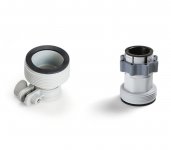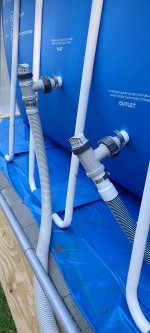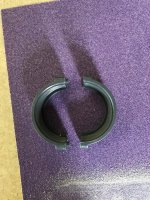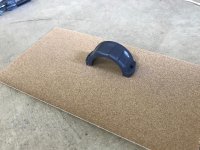Hello, I am pleased to say my therapy pool successfully holds water!
All specs are in my signature.
Next big task is getting plumbing and equipment hooked up correctly before we end up with a large vat of green goo.
I am 99% sure our problem is us; there is that 1% chance we are missing parts. We are also waiting for a reply from Fitmax.
I have searched the forum. There are several threads about the plunger valves; have not found anything to address our specific problem.
The connection between the plunger valve and hose adapter leaks. We are using plumber's tape on all threads.
First curiosity, the plunger valve and hose adapter are the same size (female to female).
Next issue, the dark gray band (threaded cuff) on the plunger valve easily tightens past the threads on the hose adapter. Yellow arrow on first photo.
It seems like there should be a coupling insert between the 2 pieces.
Any suggestions or ideas?
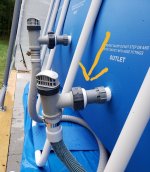
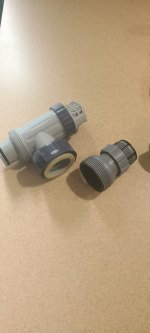
All specs are in my signature.
Next big task is getting plumbing and equipment hooked up correctly before we end up with a large vat of green goo.
I am 99% sure our problem is us; there is that 1% chance we are missing parts. We are also waiting for a reply from Fitmax.
I have searched the forum. There are several threads about the plunger valves; have not found anything to address our specific problem.
The connection between the plunger valve and hose adapter leaks. We are using plumber's tape on all threads.
First curiosity, the plunger valve and hose adapter are the same size (female to female).
Next issue, the dark gray band (threaded cuff) on the plunger valve easily tightens past the threads on the hose adapter. Yellow arrow on first photo.
It seems like there should be a coupling insert between the 2 pieces.
Any suggestions or ideas?




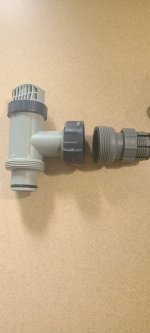
 Maybe
Maybe 

